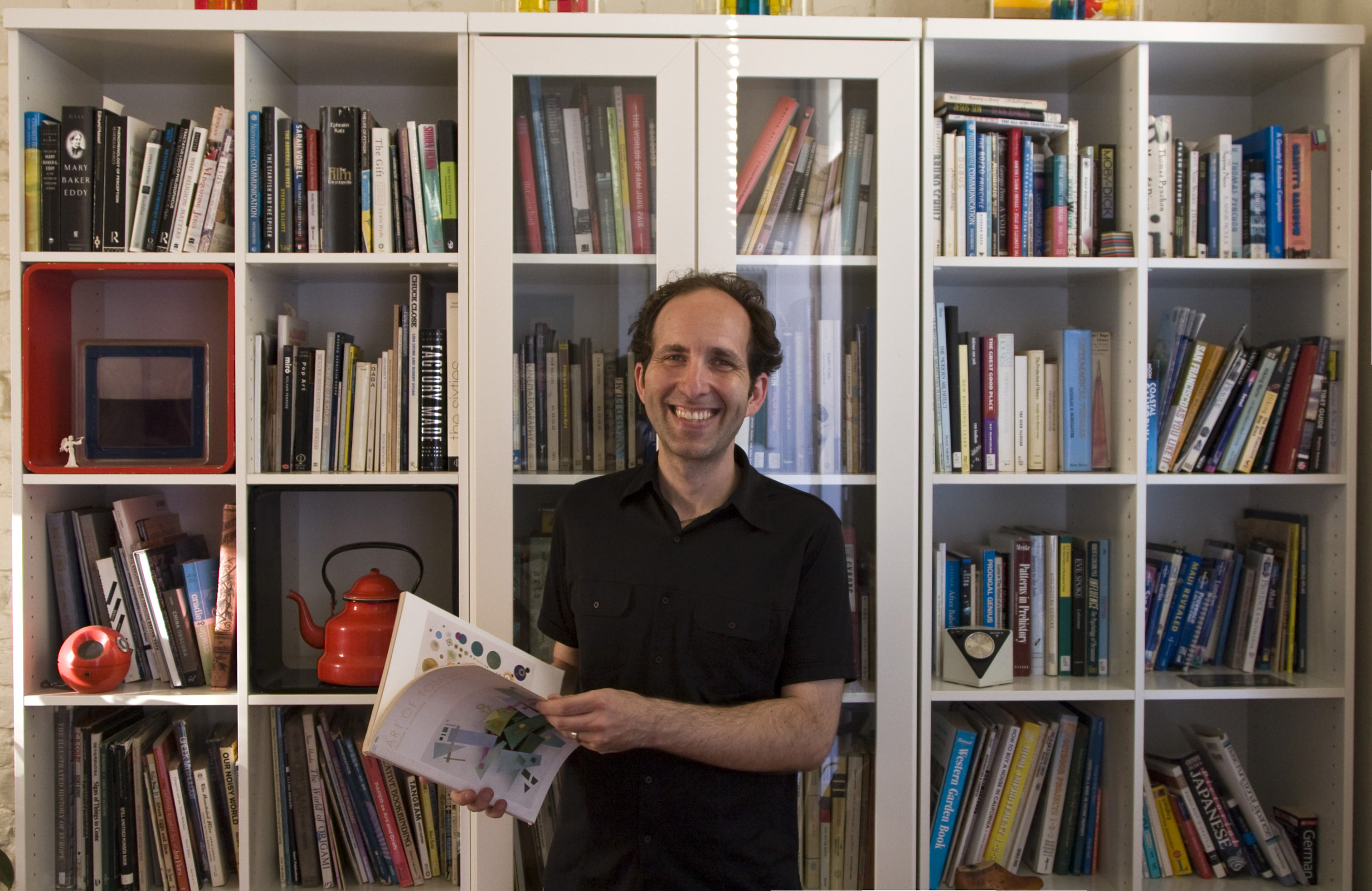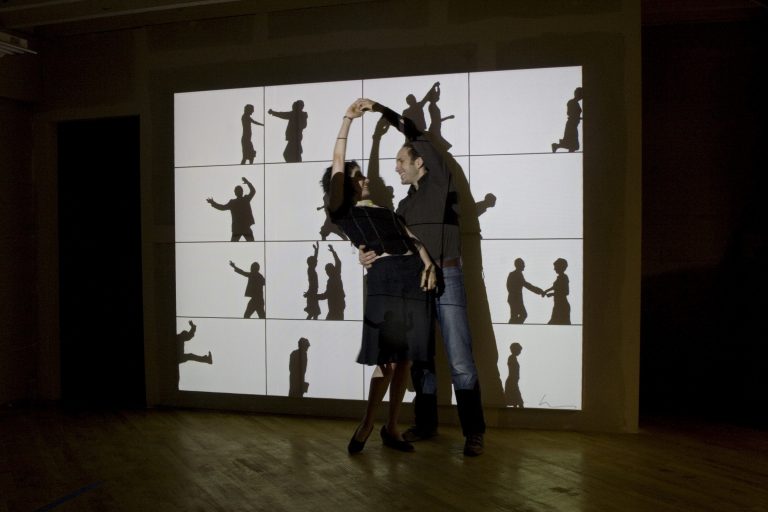A pioneer of this new life form called Digital Interactivity, Scott Snibbe—media artist, filmmaker, entrepreneur and designer—is literally shaping the future of music before our eyes. His large-scale interactive projects have been incorporated into mobile devices and in large spaces like concert tours, the Olympics, science museums and airports. He has collaborated on interactive projects with musicians and filmmakers including Brian Eno, Laurie Anderson, Björk and James Cameron.
Snibbe’s work is strongly influenced by cinema and often mixes live and filmed performances with real-time interaction. We had the opportunity to talk with him about his career, his influences, his new project and about this fascination all humans have for the things we can´t touch but we can see and experience.
There are many adjectives that people call your work, but in your opinion, what is the correct name of your work? Technology? Science? Entertainment?
I wish there were a word like interactivist— someone whose life is dedicated to creating interactive media. In college, when I worked in a research lab and my professor made fun of my projects like Motion Phone, I used to defensively call my work “useless programs.” These projects were embraced by the digital art world in the mid 90’s and called Interactive Art.
I never really wanted to be an artist, because in that domain there’s a focus on the hermetic world of commercial galleries and museum curators; you travel the world but meet up with the same 200 people wherever you go. Also there’s this problem where artists often say, in praise of their work, “I did it for myself,”— which to me is a bit of a bummer.

If I’m making something for myself, I needn’t materialize it, I can just close my eyes, and bam! I’m on Jupiter or inside Scarlett Johanssen’s eyelid. Wow! I trained in computer science and animation, and think more like a filmmaker— always about the audience.
People in film never say they’re artists. They are simply described by what creative role they play. Since I build teams to create projects, I’m a lot like a film director. These days, though, I think the richest vein for creative expression is through founding a company. Twitter or Instagram are very similar to art projects made 10-15 years before they launched.
We’re in an era where art is becoming creative products, because there are no longer gatekeepers to releasing weird programs directly to app stores. So I’m also, and these days predominantly, an entrepreneur.
Your work contains music, visuals and more perception elements—the shadows, movement and lights. But can we really touch something?
There’s an old joke that, an engineer and a physicist are standing outside their lab chatting, and a beautiful woman walks by. The physicist says, “Isn’t it a shame that, due to Xeno’s Paradox, no matter how close I’d get to her. We’d never really be touching.” To which the engineer says, “That’s close enough for all practical purposes,” and runs off after her. All my life I’ve been obsessed by the idea of interdependence, and how nothing is really a thing in and of itself—everything is made of parts and has causes, with just our mind labeling that collection as an object. Yet you can go about your everyday life and create experiences that people accept as real due to mutually agreed conceptions. These include our moral codes, systems of work, language, and now the immateriality of interactive media on our phone and computer screens.
The universe is governed by enigmatic rules, relativity, space and time, however, we have the order of chaos as a constant. In technology there is also this option? How is chaos represented in technology?
That’s such a good question. The way computers work, is artificially deterministic. I think part of why they drive us crazy is that they’ve gone so far from the way nature works. Nature is predictable in its rules, but not down to “the pixel.” You never see the same sunset twice. The way I try to bring these ideas to digital media is by borrowing the rules of nature: simulation, physics, randomness, and sensitivity to gesture and sound.
There is an element in common between Visceral Cinema Chien (2005) and Mymegraph (1998): Ants. Why use the ants like an active element?
I like ants because they are an alternate altruistic model for society; ants are selfless and will die for the group without hesitation. They also make beautiful emergent patterns that connect external reality to invisible patterns of thought.
Do you have a favorite app?
My favorite apps are probably Evernote and Spotify. Kind of boring, but they solved lifelong problems for me and I use them every day.
After working with talented people like James Cameron and knowing you’re a devoted filmmaker, do you have projects in this area of art?
I have a number of films I’d love to make one day, a lot of stories about being raised as a Christian Scientist and how that warps your reality (and healthcare), also some ideas about the singularity and spirituality. Making films has gotten easier now with digital technology, but I’m a little busy right now.
All your work was valued and admired through your career, but when you collaborated with Björk on Biophilia , your name turned viral. How did your life and work change?
My life hasn’t changed. I just get more interview requests like this. I’m not that well known, but among the little pond of interactive artists, I’m a big fish.
Working with so many machines, numbers and equations, you can turn into a very square and incredulous person, how do you keep your balance and keep creating friendly things?
Math is very cool and beautiful. It’s our education system that sucks. Math was invented to model the universe. The universe is rather interesting. The universe is not a multiple choice test, and there is not a right or wrong answer to the universe.
We have the technology as a link between ourselves and our surroundings, but this is also moving away from the most common way we communicate and interact. Do you think there’s a place for spirituality and other topics away from technology?
Technology is a tool to accomplish anything. Now there are meditation apps and even a Catholic app to make your confession. With technology today, people can get into something and really dive deep at as quick a pace as one likes. Everything in moderation, though. Facebook is really lovely if you go on for a few minutes a day and check out the nice photos of your friends. People were made for face-to-face interaction, and I think we all start to feel like we’ve been eating too much junk food if we don’t get out face-to-face and laugh, eat— move with each other.

How is your creative process? Where does your inspiration usually come from?
Ideas for me come fully formed, all at once, usually while out in nature or other calm, beautiful times. Then there’s a giant effort using charisma to enlist others in their realization, and the sweat of pounding it out. When I was making films I used to say, “Making a film is an act against God.” Everything goes wrong, conspires against you, as you try to shape matter and motion. Software is a little easier because you’re only limited by your intellect. The machine can really do anything and it’s the most wonderful invention of humanity’s history. I’ve been enthralled since I was ten years old and am so excited to be alive now.
What are you working on now?
I am working on the biggest project of my career that is just about to launch called Eyegroove (eyegroove.com). Its ultimate goal is megalomaniacal huge—to create the next multimedia format for audiovisual interactivity. In its first incarnation it is an app that lets people make their own music videos, combining video, millions of tracks of music, interactivity and real-time effects.
Who is Scott according to Snibbe?
My brother says that I am a robot.
“The purpose of my work is to bring meaning and joy to people’s lives. My work is frequently interactive, requiring viewers to physically engage with diverse media that include mobile devices, digital projections, and electromechanical sculpture. By using interactivity, I hope to promote an understanding of the world as interdependent; destroying the illusion that each of us, or any phenomenon, exists in isolation from the rest of reality.”
A very human thought for a robot, isn’t it?
www.snibbe.com
www.snibbestudio.com
www.snibbeinteractive.com
www.eyegroove.com


